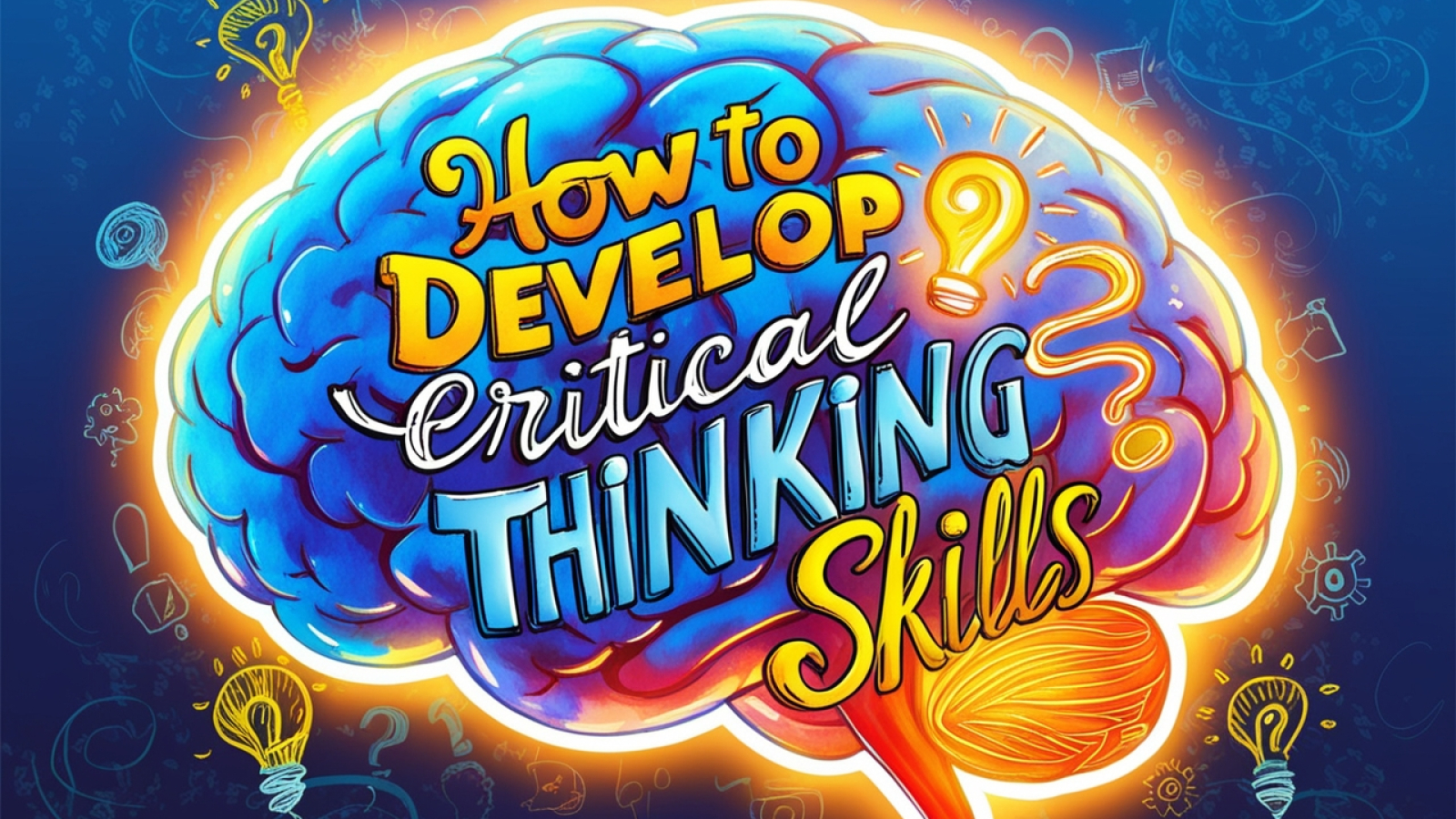Critical thinking is a vital skill in both personal and professional contexts. It involves analyzing information objectively, making reasoned judgments, and solving problems effectively. Developing critical thinking skills can enhance your decision-making abilities, boost your career, and improve your overall cognitive function. Here are actionable steps to help you develop and refine your critical thinking skills.
1. Understand the Basics of Critical Thinking
a. Define Critical Thinking
Critical thinking involves the objective analysis of facts to form a judgment. It requires the ability to think clearly and rationally, understanding the logical connection between ideas.
Example: Critical thinking is not just about gathering information but also about evaluating its credibility and relevance before forming a conclusion.
b. Recognize Its Importance
Acknowledge the importance of critical thinking in everyday life and professional settings. It helps in making informed decisions, solving problems efficiently, and understanding the consequences of actions.
Example: In the workplace, critical thinking enables you to analyze data, evaluate options, and choose the best course of action for achieving business goals.
2. Foster a Curious Mindset
a. Ask Questions
Cultivate curiosity by asking questions about everything you encounter. This habit helps you explore new ideas, challenge assumptions, and understand different perspectives.
Example: When reading a news article, ask questions like “What is the source of this information?” and “What evidence supports these claims?”
b. Seek Clarification
If you don’t understand something, seek clarification. This practice prevents misunderstandings and ensures you have accurate information to base your judgments on.
Example: In a meeting, if a concept is unclear, ask your colleagues to elaborate or provide additional examples.
3. Practice Active Listening
a. Focus on Understanding
Active listening involves fully concentrating on what is being said rather than just passively hearing the message. This helps you grasp the full meaning and context of the information.
Example: During a conversation, give your full attention to the speaker, avoid interrupting, and summarize what they’ve said to confirm your understanding.
b. Evaluate the Information
Assess the credibility and relevance of the information you receive. Consider the source, the evidence provided, and any potential biases.
Example: When listening to a presentation, evaluate the speaker’s arguments, check the validity of their data, and consider any potential biases they might have.

4. Develop Analytical Skills
a. Break Down Complex Problems
Analyze complex problems by breaking them down into smaller, more manageable parts. This approach makes it easier to understand the problem and identify potential solutions.
Example: If faced with a declining sales issue, break it down by analyzing factors like market trends, customer feedback, and internal processes.
b. Identify Patterns and Connections
Look for patterns and connections between different pieces of information. This helps in understanding the bigger picture and making informed decisions.
Example: In project management, identify patterns in past project successes and failures to improve future project outcomes.
5. Reflect on Your Thought Process
a. Self-Examine Your Thinking
Regularly reflect on your thought process to identify any biases or assumptions that might affect your judgment. This practice helps in developing a more objective and rational mindset.
Example: After making a decision, reflect on the steps you took and consider if any biases influenced your judgment.
b. Adjust Your Approach
Based on your reflections, adjust your thinking approach to eliminate biases and improve your critical thinking skills.
Example: If you realize that you tend to favor information that supports your existing beliefs (confirmation bias), make a conscious effort to consider opposing viewpoints.
6. Embrace Different Perspectives
a. Engage in Diverse Discussions
Participate in discussions with people who have different viewpoints. This exposure helps you understand alternative perspectives and develop a more well-rounded view.
Example: Join discussion groups or forums where people debate various topics, and actively listen to and consider opposing arguments.
b. Challenge Your Beliefs
Don’t shy away from questioning your own beliefs and assumptions. This practice helps in identifying any potential flaws in your thinking and broadens your perspective.
Example: If you hold a strong opinion on a political issue, research arguments from the opposing side and consider their validity.
7. Apply Critical Thinking in Real-Life Scenarios
a. Make Thoughtful Decisions
Use critical thinking skills in everyday decision-making. Weigh the pros and cons, consider the evidence, and think about the long-term consequences of your choices.
Example: When deciding on a career move, analyze the potential benefits and drawbacks, consider your long-term goals, and seek advice from mentors.
b. Solve Problems Creatively
Combine critical thinking with creativity to develop innovative solutions to problems. This approach helps in finding effective and unconventional solutions.
Example: In a marketing role, use critical thinking to analyze market data and creativity to design unique campaigns that stand out from competitors.
Conclusion
Developing critical thinking skills is an ongoing process that requires dedication and practice. By understanding the basics, fostering a curious mindset, practicing active listening, developing analytical skills, reflecting on your thought process, embracing different perspectives, and applying these skills in real-life scenarios, you can enhance your ability to think critically and make better decisions.




Add a Comment